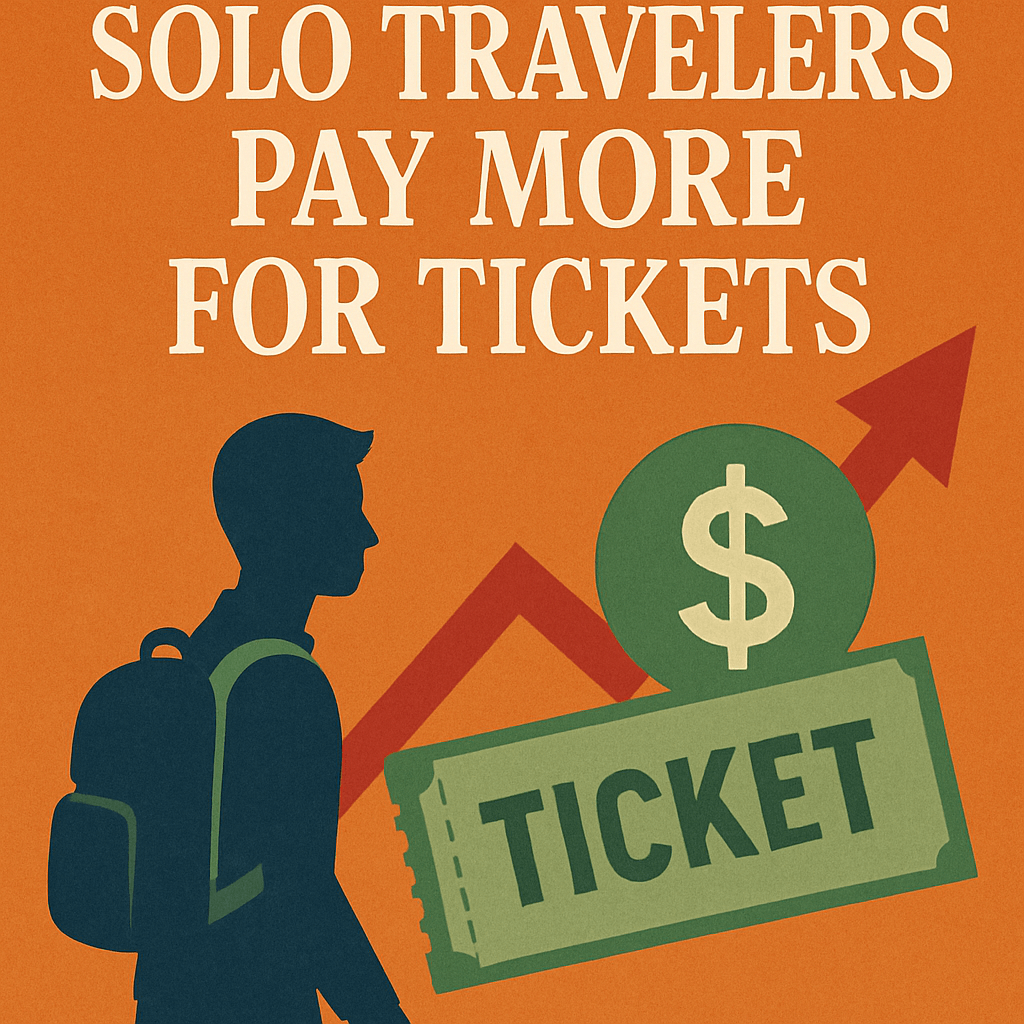Study: Solo Travelers Pay More for Tickets

Recent findings indicate that individuals traveling alone on major airlines may incur significantly higher ticket prices compared to those flying in groups. A study published by Thrifty Traveler has highlighted discrepancies in fare rates specifically affecting solo passengers, particularly on major carriers like Delta Air Lines, United Airlines, and American Airlines.
Key Findings of the Study
The investigation into ticket pricing patterns arose when one of Thrifty Traveler’s editors observed a solo fare exceeding $50 compared to the fare for a seat purchased as part of a two-person ticket package. The study analyzed hundreds of fare scenarios from various airlines and uncovered instances where solo fares were markedly higher. In some cases, discrepancies reached as much as $266, indicating that solo travelers were at times paying nearly double what group travelers would pay for the same seat.
Airlines Respond to Pricing Discrepancies
In light of the findings, both Delta and United Airlines have reportedly amended their pricing strategies, equalizing fares for solo travelers and group bookings. However, the extent of this adjustment remains uncertain. It is important to note that American Airlines did not immediately comment on the findings, and Delta declined to provide any remarks, leaving room for speculation about whether this pricing rollback is a long-term change or a temporary adjustment amid heightened scrutiny.
Understanding Dynamic Pricing Models
The airline industry has long embraced dynamic pricing models, a strategy that allows real-time fare adjustments based on various factors, including demand, booking history, and travel patterns. These models leverage sophisticated algorithms to maximize revenue, often resulting in price variations that can confuse consumers. It is a well-established fact that business travelers, who frequently travel solo, represent a significant source of revenue for airlines. Some industry experts posit that this may have prompted airlines to implement higher prices for solo travelers, effectively targeting those willing to pay a premium for the convenience of last-minute bookings.
The Impact of Geopolitical Factors on Air Travel
This year has seen a notable decline in international travel, particularly from neighboring Canada. Factors driving this trend include rising tensions between the U.S. and Canada, which have contributed to a decrease in cross-border travel. The potential economic implications are substantial, as airlines depend heavily on international tourism for a considerable portion of their revenue stream. This situation adds another layer of complexity to the pricing strategies airlines deploy.
Variability in Fares: The Exceptions
The variations in pricing for solo versus group tickets are not ubiquitous across all routes or airlines. According to Thrifty Traveler, while discrepancies were found in certain fare scenarios, this does not indicate a universal trend across all flights. Passengers should remain vigilant and compare fares before booking.
Final Thoughts
As airlines adapt their pricing strategies in response to consumer behavior and external factors, solo travelers must remain informed about ticketing practices that could impact travel costs. Ongoing analysis and monitoring of fare trends will be essential for understanding the broader implications of these pricing structures in the airline industry.
“Dynamic pricing in aviation is not just a tool for revenue maximization; it is a reflection of changing consumer behavior and market conditions.” – Aviation analyst